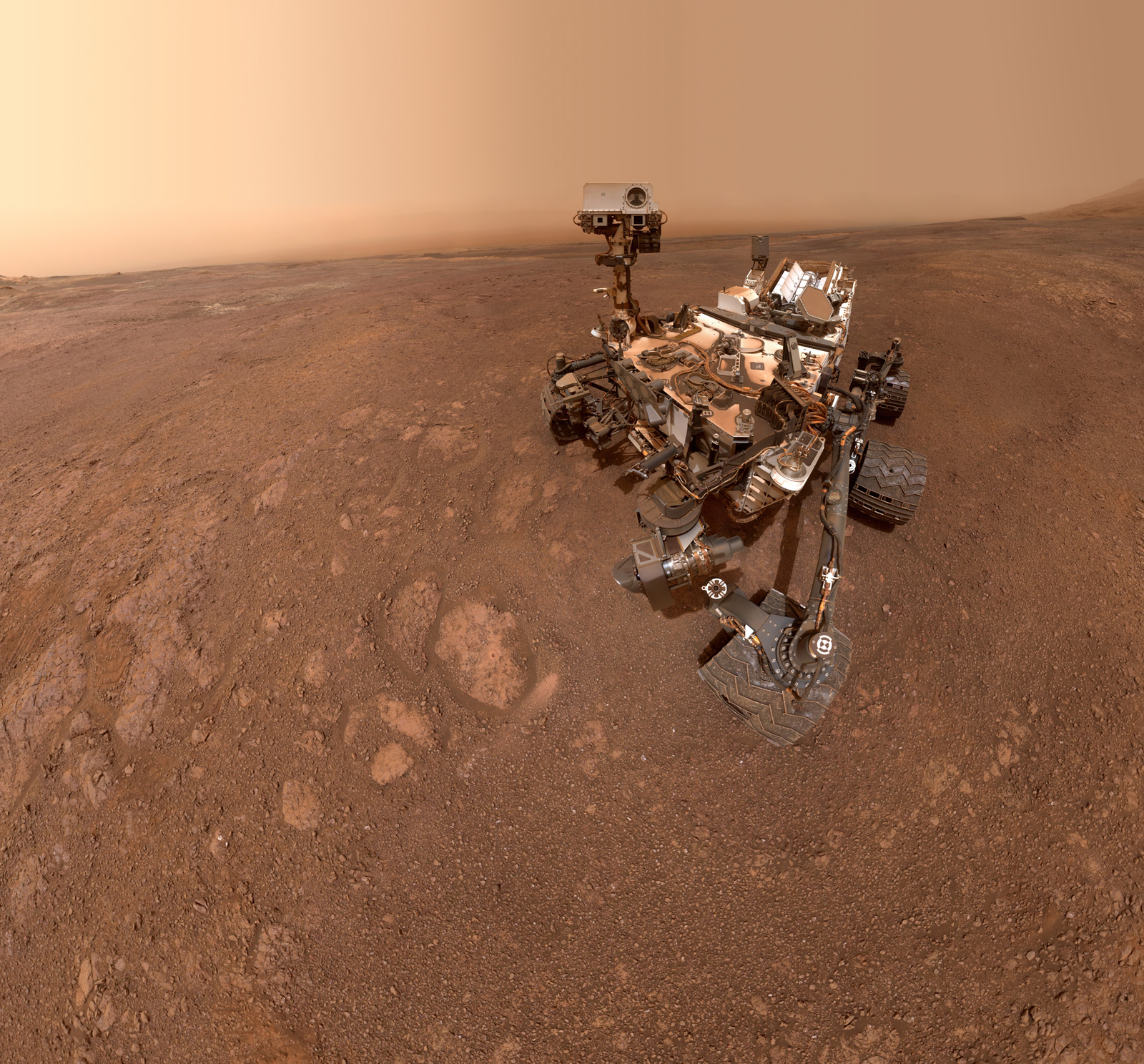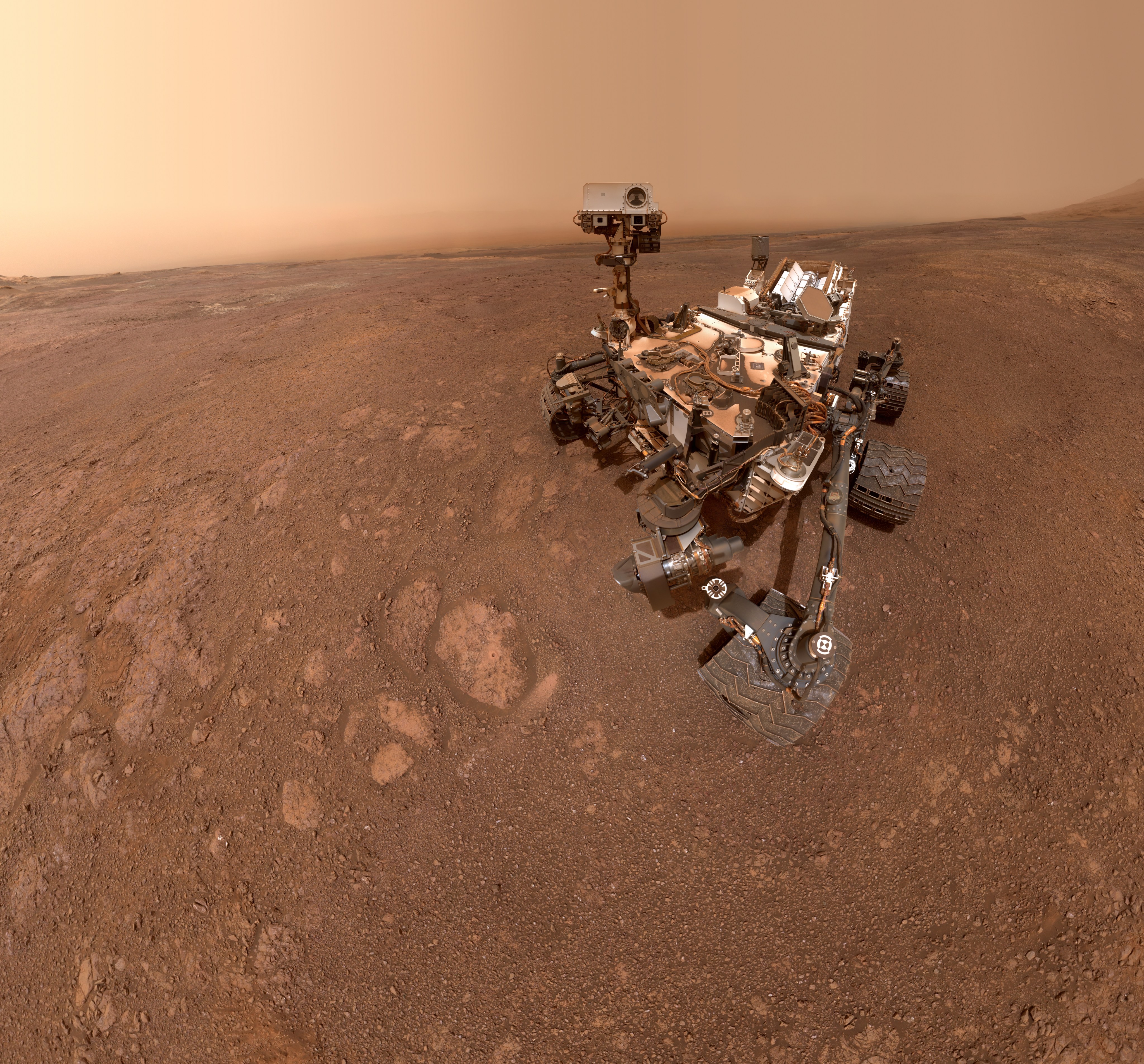Curiosity’s Selfie at “Rock Hall”

| Credit | NASA/JPL-Caltech/MSSS |
|---|---|
| Historical Date | January 15, 2019 |
| Language |
|
A selfie taken by NASA's Curiosity Mars rover on sol 2291 (Jan. 15, 2019) at the "Rock Hall" drill site, located on Vera Rubin Ridge.
This was Curiosity's 19th drill site. The drill hole is visible to the rover's lower-left; the entire scene is slightly dustier than usual due to a regional dust storm affecting the area.
The selfie is composed of 57 individual images taken by the rover's Mars Hand Lens Imager (MAHLI), a camera on the end of the rover's robotic arm. The images are then stitched together into a panorama. MAHLI was built by Malin Space Science Systems in San Diego. NASA's Jet Propulsion Laboratory, a division of Caltech in Pasadena, manages the Mars Science Laboratory Project for the NASA Science Mission Directorate in Washington. JPL designed and built the project's Curiosity rover.
Related Story
Curiosity Says Farewell to Mars' Vera Rubin Ridge
NASA's Curiosity rover has taken its last selfie on Vera Rubin Ridge and descended toward a clay region of Mount Sharp. The twisting ridge on Mars has been the rover's home for more than a year, providing scientists with new samples — and new questions — to puzzle over.
On Dec. 15, Curiosity drilled its 19th sample at a location on the ridge called Rock Hall. On Jan. 15, the spacecraft used its Mars Hand Lens Imager (MAHLI) camera on the end of its robotic arm to take a series of 57 pictures, which were stitched together into this selfie. The "Rock Hall" drill hole is visible to the lower left of the rover; the scene is dustier than usual at this time of year due to a regional dust storm.
Curiosity has been exploring the ridge since September of 2017. It's now headed into the "clay-bearing unit," which sits in a trough just south of the ridge. Clay minerals in this unit may hold more clues about the ancient lakes that helped form the lower levels on Mount Sharp.
For more information about NASA's Curiosity Mars rover, visit: https://mars.nasa.gov/msl/

